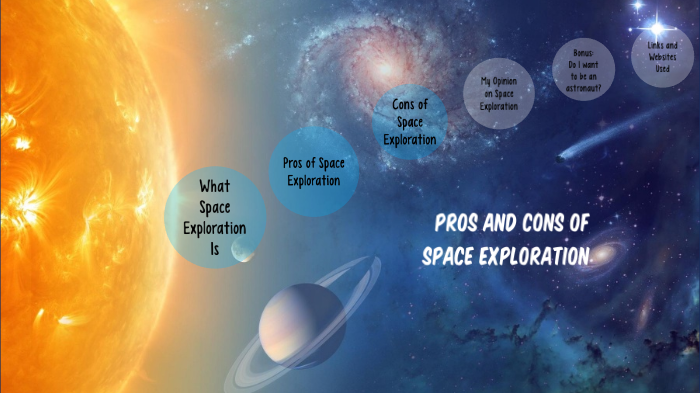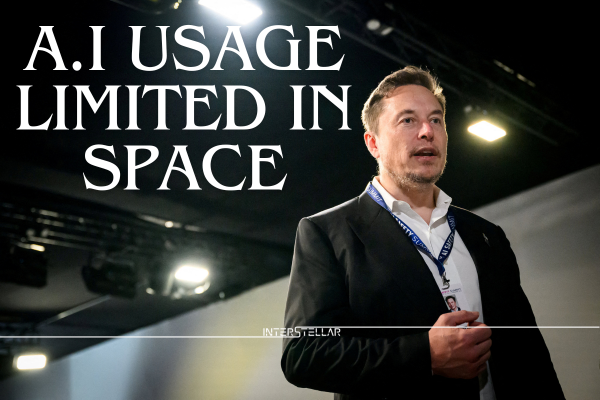Discover Pandipedia
Pandipedia is the world's first encyclopaedia of machine generated content approved by humans. You can contribute by simply searching and clicking/tapping on "Add To Pandipedia" in the answer you like. Learn More
Expand the world's knowledge as you search and help others. Go you!

Are these models capable of generalizable reasoning or are they leveraging different forms of pattern matching
Unknown[1]
Despite their sophisticated self-reflection mechanisms, these models fail to develop generalizable reasoning capabilities beyond certain complexity thresholds.
Unknown[1]

Existing evaluations predominantly focus on established mathematical and coding benchmarks, which... do not provide insights into the structure and quality of reasoning traces.
Unknown[1]
This study investigates the reasoning mechanisms of frontier LRMs through the lens of problem complexity.
Unknown[1]
Current evaluations primarily focus on established mathematical and coding benchmarks, emphasizing final answer accuracy.
Unknown[1]
Let's look at alternatives:
- Modify the query.
- Start a new thread.
- Remove sources (if manually added).
- Request a manual search from our human research team.
Let's look at alternatives:
- Modify the query.
- Start a new thread.
- Remove sources (if manually added).
- Request a manual search from our human research team.
Get more accurate answers with Super Search, upload files, personalised discovery feed, save searches and contribute to the PandiPedia.

Mental health apps are not entirely replacing traditional therapy but are seen as valuable adjuncts. They provide cost-effective, accessible, and timely support, particularly for individuals unable to access traditional services due to geographical or financial barriers[1][2].
However, challenges remain, such as user engagement and the lack of robust evidence for many apps' efficacy compared to traditional treatments. Research indicates that while apps can reduce symptoms for some, they often lack the therapeutic alliance and personalized care found in face-to-face therapy[3][4]. Thus, they are best used to complement, rather than replace, conventional mental health care.
Let's look at alternatives:
- Modify the query.
- Start a new thread.
- Remove sources (if manually added).
- Request a manual search from our human research team.

Cellular respiration is the process by which biological fuels are oxidized in the presence of an inorganic electron acceptor, such as oxygen, to produce large amounts of energy in the form of adenosine triphosphate (ATP). This process involves a set of metabolic reactions and occurs in the cells of organisms to convert chemical energy from nutrients into ATP while releasing waste products[1].
Respiration can be either aerobic, requiring oxygen, or anaerobic; some organisms can switch between these two types[1]. The process includes glycolysis, the citric acid cycle, and oxidative phosphorylation, highlighting that while the theoretical yield of ATP from one glucose molecule can reach up to 38, actual yields are typically around 30 due to inefficiencies[1].
Cellular respiration is vital for fueling cellular activity by providing the energy necessary for processes such as biosynthesis and locomotion[1].
Let's look at alternatives:
- Modify the query.
- Start a new thread.
- Remove sources (if manually added).
- Request a manual search from our human research team.
Let's look at alternatives:
- Modify the query.
- Start a new thread.
- Remove sources (if manually added).
- Request a manual search from our human research team.

Language is a crucial element of human identity and serves as a vessel for cultural heritage. The extinction of a language goes beyond the loss of words; it signifies the erasure of a cultural identity, traditional knowledge, and unique worldviews. Approximately every two weeks, a language dies, leading to significant cultural consequences as entire ways of life and understandings of the world vanish along with it[8][9].
Loss of Cultural Identity and Heritage

Languages are intimately linked to the identities of their speakers. Each language carries unique cultural markers, traditions, and narratives that define a group's heritage. When a language becomes extinct, it often results in the obliteration of the cultural practices, ceremonies, and social structures associated with that language. For instance, terms that denote kinship and community relationships can vanish, disrupting the social fabric that binds community members[8]. Furthermore, unique cultural expressions, such as oral traditions, stories, and rituals, are intricately tied to language. As these languages fade, the rich tapestry of cultural identity loses its threads, leading to a more homogenized world that lacks diversity and richness[8][9].
Knowledge and Wisdom at Risk

Indigenous languages, in particular, hold vast reservoirs of ecological and cultural knowledge accumulated over centuries. These languages often encapsulate intricate understandings of local ecosystems, medicinal practices, and sustainable living principles. The extinction of such languages risks not only the loss of specific knowledge but also the loss of entire frameworks for understanding and interacting with the environment. For example, indigenous languages frequently contain key knowledge about biodiversity, ecological practices, and climate adaptations[8]. The disappearance of these languages leads to the erosion of local wisdom that is crucial for addressing contemporary environmental challenges[8][9].
Historically, languages have been the primary means of transmitting knowledge from generation to generation. When a community’s language dies, it often results in a significant gap in the intergenerational transfer of this knowledge, diminishing the community's resilience and adaptability. As one source notes, “the loss of traditional knowledge... diminishes humanity’s cultural diversity and resilience”[8]. Language extinction thus poses a severe threat not only to the speakers but to the broader global community that relies on such diverse ecological insights.
Misconceptions About Language and Culture

There is a compelling narrative that losing a language equates to losing cultural identity. However, recent studies suggest this perspective may sometimes be oversimplified. For instance, in Australia, many Indigenous individuals now communicate in English or creole languages, and they still find ways to express cultural identity and values in these new contexts[7]. Linguistic adaptability indicates that, while languages may change or evolve, cultural expressions can persist in new linguistic forms. This perspective is vital for understanding the complexity of cultural identity in modern, multilingual societies, especially those influenced by colonial histories[7].
Social and Psychological Implications
The social dynamics surrounding language use can also impact community cohesion and individual identity. Communities may face linguistic stigma, where speakers of minority languages feel marginalized or judged for their linguistic choices. Such pressures can lead to language avoidance among younger generations, further driving the cycle of language loss[7][8]. Negative perceptions surrounding the capabilities of heritage speakers result in insecurity and reluctance to use their native tongue, which can have damaging effects on their self-identity and interconnectedness within their communities[2][4].
Moreover, the imposition of dominant languages through formal education systems and societal norms often sidelines minority languages, creating environments where the latter are devalued[2][4][5]. The intertwined nature of language, identity, and cultural expression means that the pressures to conform to a dominant language not only endanger minority languages but also threaten the cultural identities they represent.
Revitalization Efforts

Amidst the challenges of language extinction, various revitalization efforts are being constructed to support endangered languages and their associated cultures. These efforts emphasize the importance of community engagement and linguistic pride in combating the neglect or loss of heritage languages[5][9]. For example, successful revitalization strategies include language nests, master-apprentice programs, and community-based educational initiatives designed to stimulate interest and fluency among younger generations[5][9]. Such programs aim not only to preserve the language but to empower its speakers by reaffirming the connection between language, culture, and identity.
The overarching goal of these initiatives is to counter the trend of language loss and to celebrate the rich diversity that each language contributes to humanity. As highlighted in various discussions, the collective efforts necessary to revive and maintain endangered languages ultimately serve to reinforce cultural identities, echoing the sentiment that “if we are to survive, to continue on...then we have to have a language”[9].
Conclusion
The extinction of a language has profound implications for culture, identity, and community knowledge. With each disappearing language, unique worldviews, histories, and ecosystems of knowledge risk being lost forever. As society grapples with these issues, understanding the intrinsic relationship between language and culture becomes imperative for fostering a world that values diversity and promotes inclusive efforts toward language preservation. The ongoing dialogue about language revitalization serves as a reminder of the resilience of cultural identity and the vital role that languages play in shaping the human experience.
Let's look at alternatives:
- Modify the query.
- Start a new thread.
- Remove sources (if manually added).
- Request a manual search from our human research team.
Get more accurate answers with Super Search, upload files, personalised discovery feed, save searches and contribute to the PandiPedia.
Let's look at alternatives:
- Modify the query.
- Start a new thread.
- Remove sources (if manually added).
- Request a manual search from our human research team.

Engaging in DIY crafting has become increasingly recognized as a beneficial practice for mental health. Through a variety of creative activities, individuals can enhance their emotional well-being, reduce stress, and foster social connections. This report explores the numerous ways in which crafting can positively influence mental health, supported by recent research and expert insights.
Mindfulness and Stress Relief

Crafting promotes mindfulness, an important factor in alleviating stress and anxiety. The focused and repetitive nature of many creative activities, such as knitting and painting, encourages individuals to immerse themselves fully in the task at hand. This focus helps distract from negative thoughts and promotes a calming effect, akin to meditation. As noted, 'Crafting requires concentration and repetitive actions, promoting mindfulness and keeping individuals present'[2]. This therapeutic process allows for a break from daily worries, leading to significant reductions in stress levels[2][4].
Research has shown that these engaging activities can reduce the levels of the stress hormone cortisol, thus improving overall quality of life. Engaging in enjoyable hobbies such as crafting can result in lower cortisol levels and enhance feelings of happiness, aligning with findings that “crafting can reduce stress”[9]. A study involving nearly 50,000 participants revealed that 76% used creativity as a 'distraction tool' to manage stress[3].
Emotional Expression and Accomplishment

Participating in craft projects provides individuals with a sense of completion and achievement. The tangible results of crafting—whether it's finishing a knitted item or completing a painting—contribute to boosted self-esteem and reduce feelings of depression. Completing projects instills a sense of pride and accomplishment, which can be especially beneficial for those struggling with self-worth issues. Studies suggest that 'completing a crafting project provides a sense of achievement, boosting self-esteem and reducing feelings of depression'[2].
Additionally, crafting allows for emotional expression. Engaging in art forms such as painting or sculpting can help individuals process complex emotions and serve as a therapeutic outlet for feelings that may be hard to articulate verbally. For instance, “Crafting allows for emotional expression, enabling individuals to process and release their feelings”[2]. This can lead to improved emotional regulation and reduction of negative moods.
Social Connections and Community Building

Crafting activities often foster social interactions, which are critical for mental health. Group workshops and online communities create opportunities for social support, reducing feelings of isolation and loneliness. As highlighted in various studies, in-person and virtual crafting groups offer a shared experience that can be uplifting and nurturing. Crafting together encourages bonding and provides a strong sense of community, which is vital for emotional support. Whether it’s through a “‘knit and natter’ group” or a local crafting club, social connections can contribute significantly to mental wellness[1][2].
Testimonials from participants underline the importance of these interactions, with members expressing that joining crafting groups has “literally saved my life and allowed me to gain a sense of purpose and belonging”[1]. The combination of creativity and community can significantly enhance psychological well-being.
Cognitive Benefits and Aging
Participatory crafts also show promise in cognitive enhancement, particularly among older adults. Activities like basket-making and textile crafts may help re-establish neural pathways and promote brain plasticity, which is essential for cognitive health. Engaging with crafts not only helps in maintaining cognitive function but can also reduce the risk of dementia and cognitive decline. For instance, research indicates that “community engagement and cultural activities may reduce the risk of dementia onset”[1]. These findings highlight the potential of crafting as a valuable tool in supporting cognitive health throughout the aging process.
Conclusion
The mental health benefits of DIY crafting are substantial and multifaceted. From fostering mindfulness and emotional expression to enhancing social connections and cognitive performance, engaging in crafting activities can serve as an effective tool for improving overall mental well-being. As individuals navigate the pressures of modern life, incorporating crafting into routine practices could provide a joyful escape and a pathway toward a balanced, fulfilled life. Whether undertaking a solitary project or participating in a community group, the act of creating with one’s hands is not just about the end product; it is about the holistic benefits that crafting brings to the mind and spirit.
Let's look at alternatives:
- Modify the query.
- Start a new thread.
- Remove sources (if manually added).
- Request a manual search from our human research team.

Comedians have long played a vital role in society by addressing controversial and taboo topics through humor. Their ability to challenge societal norms and spark conversations about sensitive issues reflects the profound impact of comedy on cultural discourse. This report delves into the various strategies comedians use to navigate taboo subjects while balancing humor and sensitivity.
The Essence of Taboo Comedy
Taboo comedy, often defined by its willingness to address topics considered off-limits or uncomfortable, thrives on pushing boundaries. This genre utilizes humor to confront the unspoken and invites audiences to grapple with their own biases and preconceptions. Rather than shying away from sensitive themes, comedians engage with them directly, employing satire and irony as tools to provoke thought while eliciting laughter. By using humor as a release for pent-up psychological tension, comedians can address taboo subjects in ways that provide catharsis for both themselves and their audiences[2][5].
Historical Context and Evolution
The roots of taboo comedy can be traced back to the ribald humor of burlesque shows and vaudeville acts, where explicit language and sexual innuendo were common. Comedians like Lenny Bruce and George Carlin pushed the genre forward, fearlessly addressing societal taboos and challenging censorship laws with their routines[1]. Bruce's controversial performances and Carlin's infamous 'Seven Words You Can Never Say on Television' sparked debates around freedom of expression, showcasing how humor could be used as a vehicle for societal critique[1][4].
As societal norms have evolved, so too has the approach comedians take when addressing sensitive topics. Contemporary comedians leverage their platforms to tackle complex issues related to race, gender, sexuality, and politics, often blending humor with social commentary to highlight societal injustices[5][7]. For instance, Dave Chappelle has been known for his audacious exploration of race and social issues, prompting reflections on uncomfortable truths in a palatable form[5][8].
Techniques for Addressing Sensitive Topics
Comedians employ various techniques when tackling taboo subjects to ensure that their humor resonates without crossing ethical boundaries.
Satire and Social Commentary
One of the primary tools used in taboo comedy is satire, which critiques societal norms through exaggerated or ironic portrayals. This approach allows comedians to address contentious topics, such as politics and religion, while engaging audiences critically[6][9]. Comedians like Ricky Gervais and Amy Schumer utilize satire to challenge conventional attitudes, prompting discussions surrounding issues like gender roles and societal expectations[9]. Such humor invites audiences to reassess their preconceived notions while maintaining an entertaining experience.
Personal Narratives and Relatability
Many comedians opt to weave personal experiences into their routines when discussing sensitive topics. For example, Daniel Sloss's comedic show 'Dark' explores the deeply personal tragedy of losing a sibling while intertwining humor with his journey of grief. By sharing personal hardships, he fosters a sense of connection with the audience, allowing people who have faced similar struggles to find relief through laughter[2]. Similarly, performers like Sarah Millican openly discuss relational and body image issues, using relatable humor to empower audiences facing similar challenges[2][4].
Balancing Humor with Sensitivity
Successful taboo comedy often hinges on the comedian's ability to balance humor with a sensitivity to the subject matter. Many comedians navigate this challenge by ensuring that their punchlines promote inclusivity rather than exclusion. For instance, comedians are sometimes advised to 'punch up' rather than 'punch down,' targeting those in power rather than marginalized groups[8]. This approach helps mitigate potential backlash and ensures that the jokes foster meaningful dialogue rather than perpetuating harmful stereotypes.
Engaging with Audience Reactions
Today’s comedians must also consider audience reactions carefully. The rise of social media has amplified the potential for backlash against controversial material, making it essential for comedians to gauge audience sensibilities[5][8]. Audiences play a significant role in shaping comedic narratives; comedians often adjust their acts based on the collective feedback from their viewers, adapting to evolving social attitudes and cultural dialogues[4][8]. This responsiveness underscores that while comedians wield the power of humor, the ultimate acceptance of their material rests with their audience.
The Impact of Taboo Comedy on Society

The impact of taboo comedy extends beyond mere entertainment; it fosters critical conversations around sensitive issues. Comedy serves as a mirror reflecting societal challenges and encouraging discourse on uncomfortable subjects. By addressing topics such as mental health, discrimination, and societal inequalities through humor, comedians can make these issues more accessible to wider audiences, prompting introspection and understanding[7][9]. Ultimately, the role of comedy in society can be seen as a powerful catalyst for change, expanding the boundaries of acceptable discourse and encouraging audiences to engage with challenging topics in new ways[1][7].
Conclusion

Comedians tackle taboo subjects by embracing humor as a powerful means of engaging with sensitive themes. Through satire, personal narratives, and an awareness of audience reactions, they navigate the complexities of modern societal norms while provoking thought and discussion. As the landscape of comedy continues to evolve, so does its potential to challenge societal conventions and contribute to meaningful dialogues on pressing issues. By navigating the fine line between humor and sensitivity, comedians not only entertain but also enlighten, teaching us to confront our biases while promoting empathy and understanding within society.
Let's look at alternatives:
- Modify the query.
- Start a new thread.
- Remove sources (if manually added).
- Request a manual search from our human research team.

Space exploration presents a range of formidable challenges that impact both the feasibility and safety of missions beyond low Earth orbit. These limitations stem from technical, biological, and environmental factors that must be addressed to ensure successful exploration of destinations such as the Moon and Mars.
Technical Challenges

One of the foremost challenges in space exploration is the technological limitations of launch vehicles and spacecraft. Currently, many rockets require enormous amounts of energy to achieve escape velocity from Earth's gravitational pull, which can exceed 25,000 miles per hour. This high-energy requirement leads to significant costs and complexities in spacecraft design. For instance, a noteworthy example is the launch cost of the Mars Curiosity rover, which approached $200 million, highlighting the financial burden associated with launching heavy payloads into space. Furthermore, developing reusable rockets, like SpaceX's Falcon 9, is crucial for reducing costs over time by enabling multiple flights from the same hardware, although achieving this at scale remains a complex engineering challenge.
In terms of propulsion systems, current chemical-based fuels are inefficient for long-duration missions, presenting limitations in speed and fuel capacity. Spacecraft equipped with nuclear fusion or laser-powered propulsion systems, such as those conceptualized in the Breakthrough Starshot program, offer potential alternatives, but significant engineering breakthroughs would be necessary to make these viable for human transport.
Biological Limitations

Astronauts face several health risks during long-duration space missions that cannot be easily mitigated. One major concern is the impact of microgravity on the human body. Extended exposure to microgravity can lead to muscle atrophy, bone density loss, and cardiovascular deconditioning. Research indicates that bone loss occurs at a rate significantly accelerated compared to aging on Earth, which could impede astronauts' physical performance and health upon return.
Another critical health challenge is exposure to cosmic radiation, which is considerably higher outside Earth's protective atmosphere. This radiation poses long-term health risks, including an increased likelihood of cancer and other disease. Currently, proposed solutions include physical shielding, such as incorporating materials like hydrogenated boron nitride nanotubes (BNNTs) into spacesuits and habitats. However, the materials need further development to ensure they can effectively protect astronauts during long missions, especially to Mars where the radiation levels are more intense.
Psychological and Social Effects
Isolation and confinement on long missions can lead to psychological stress among astronauts. The social dynamics of small crews responding to extended periods of isolation can complicate mission success. Communication delays, especially during interplanetary missions, can exacerbate feelings of solitude and isolation, making effective team dynamics even more critical. NASA's studies highlight that the average communication delay with Mars can be between four to 24 minutes one way, leading to increased operational risks during emergencies.

To combat potential psychological stress, researchers are exploring methods to create artificial gravity environments and studying the effects of hibernation-like states during long spaceflights, which could mitigate conflict among crew members during transit. Moreover, crew selection processes are being examined to ensure a harmonious working environment when stress levels rise.
Environmental Obstacles

The environments of celestial bodies present their own significant challenges. For instance, landing on the Moon or Mars requires navigating hazardous terrain marked by craters and boulders, which complicates landing procedures and increases the risk of mission failure. Recent attempts by various nations to land successfully on the Moon have demonstrated that despite advances in technology, the difficulty of achieving a soft landing remains high.
On Mars, atmospheric conditions and gravity present unique challenges that complicate landing maneuvers for heavy payloads required for crewed missions. Current technologies used for landers and rovers may not be sufficient for larger human-carrying vehicles, necessitating further innovation.
Conclusion

In summary, while the ambition for space exploration ignites global interest and progress, significant limitations remain to be addressed. The technical hurdles related to rockets and propulsion methods, biological and psychological impacts on astronauts, and the harsh environments of potential destinations all compound the complexities involved in sending humans beyond Earth. Overcoming these challenges requires continued investment in research and development, fostering innovative solutions that ensure both the safety and success of future missions.
Let's look at alternatives:
- Modify the query.
- Start a new thread.
- Remove sources (if manually added).
- Request a manual search from our human research team.